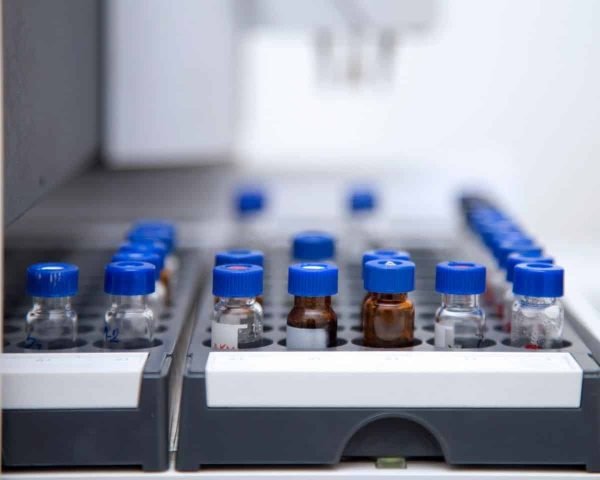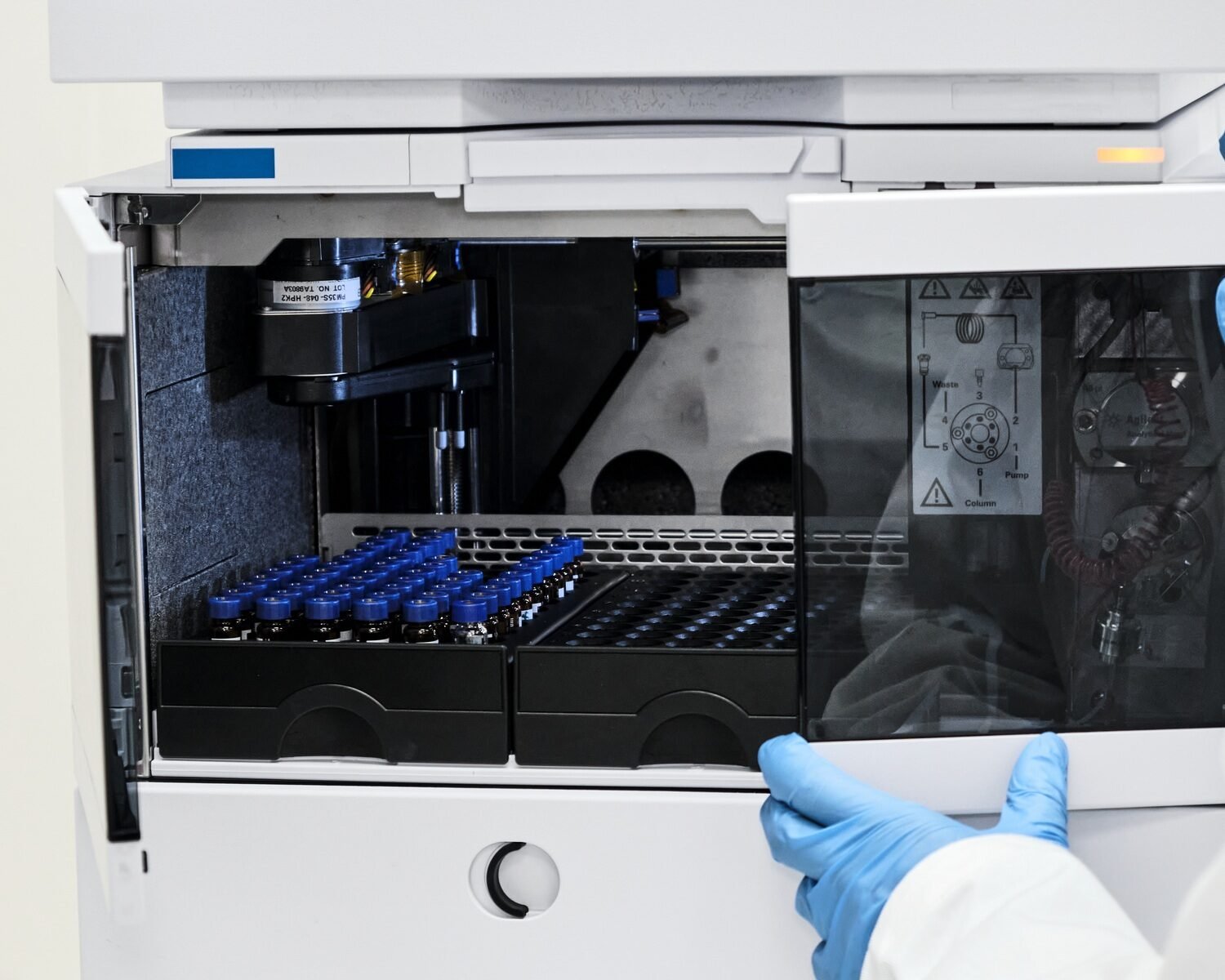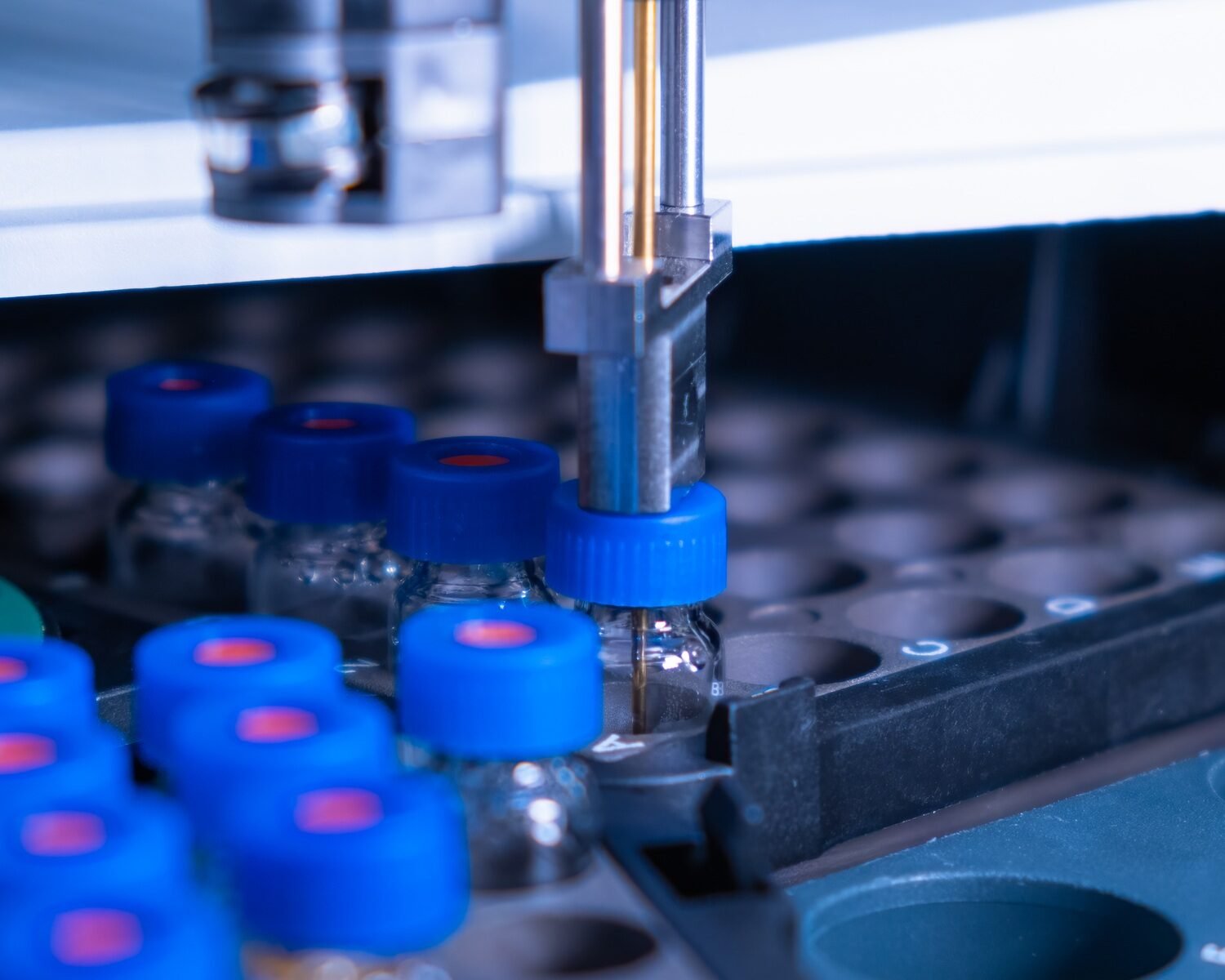Not all vials are created equal, and each vial made has its purpose in the world of laboratory technology.
If your mind hasn’t grasped yet the two, don’t worry because we got the answers to your questions.
As the name suggests, high-performance liquid chromatography operations require HPLC vials. In contrast, headspace analysis utilizes headspace vials. In addition, headspace vials are only made from Type 1 Class A glass. On the other hand, HPLC vials can be made from many, as discussed in our previous article.
Let me share the difference between HPLC vials and headspace vials in this detailed article.
What are HPLC vials
HPLC vials offer a wide range of high-quality screw caps and specialty closure systems. They are designed to meet the demands of pharmaceutical, biotechnology, and other industries. They come in different forms to guarantee compatibility with specific uses. They can separate organic and inorganic compounds for analysis.
HPLC vials serve as the primary container for injected samples. Samples are inserted through a vial opening. They get separated according to their charge, size, binding affinity, or other physical property. Chromatography systems must be bright, corrosion-resistant, and possess good tensile strength.
The need for chromatography continues in the food, drug, and analytical chemistry industries. Packaging vials that deliver pure samples for accurate results has become an everyday need. Some situations can compromise the reliability of drug testing in the pharmaceutical industry. Examples are when any foreign material gets introduced into the sample or if there is any variation in glass quality.
High-quality chromatography vials have become standard. The goal is to ensure sample purity and reproducibility from one analysis to another. Besides high-purity glass, manufacturers must pay attention to other aspects of chromatography solutions. These include closures, septa, and accessories.
What chromatography vial is suited for the HPLC?
HPLC separates the components of analyte mixtures by passing a liquid mobile phase through a solid stationary phase. Scientists can also use HPLC to test new medications as they progress through the development process.
Autosampler vials are commonly used in the HPLC technique. Also, autosampler vials are widely used in GC, too. They must be of excellent quality to guarantee no contamination in the final chromatographic separation. The vials are made using high-quality glassware. It gives users confidence that the findings they see are accurate.
What chromatography vial is suited for the headspace GC?
Headspace vials help capture the samples’ volatile organic compounds (VOCs). As such, they should be resistant to high temperatures and corrosion. The headspace is a volume of air above the sample.
The headspace is then analyzed using gas chromatography-mass spectrometry (GC-MS). This technique separates molecules based on their weight and charge and identifies them by measuring their mass.
Type 1 borosilicate glass is the material needed for creating headspace vials. If the vial needs to be heated, it should be made from 33-expansion glass. Using it will improve vial integrity and autosampler fit, but manufacturers can also use 51-expansion or 70-expansion glass as an economical option.
Flat bottom or round bottom, what’s the catch?
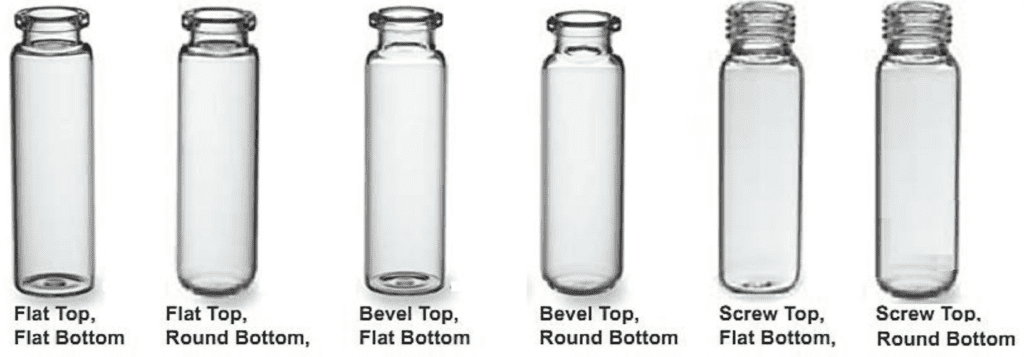
It is also essential to discuss the different bottom of headspace vials. The vials you receive may have either a round or flat bottom. It is important to note that the vial with the flat bottom should be placed on the rack’s left, with the round-bottomed vial next to it and on the right. This arrangement will help ensure that you are not inserting your needle into your vial of the sample before you insert it into your instrument.
Round-bottom vials work best with autosamplers with a robotic arm capable of bringing the sample in a vial to a needle. Flat bottom vials are the total opposite since the autosamplers will get the needle right in the direction of the vials. Most of the time, the flat bottom type has a larger capacity and allows the most economical inserts.
Flat top vials and beveled vials
Another crucial consideration with headspace vials is the cap, which comes in both flat and beveled varieties. Both caps are great at containing samples. When the vial is closed, the only change is the amount of space surrounding the cap. Flat-topped vials may be used with practically any headspace autosampler. With only a few autosamplers, beveled top vials can be utilized.
Consulting your autosampler’s handbook is the best approach to determine which option to select. Autosamplers that do not move the vial out of the rack can employ beveled top vials as a fast guideline. Flat top vials are required for robotic arm autosamplers that use a magnetic pick-up. The reason is so that there will be sufficient contact between the cap and the magnet. Other robotic arm autosamplers may or may not be able to use beveled top vials. It depends on how they grip the vial.
Suppose you have a high-volume laboratory and need your autoclaves to run faster. In that case, chemical-resistant caps and crimp tops may not be not good options. Vials with beveled tops can help the crimp top seal better. The outside rim of the vial, cap, and septum are where the sealing pressure is most significant in a flat-topped vial. The sealing pressure is spread uniformly over the top of the vial using a beveled top vial.
Screw-top vials or crimp top vials
Screw caps for headspace vials are a recent development. They sidestep the problem of crimping on an all-steel cap or a composite steel or aluminum cap. The plated steel caps are reusable and do not require tools to seal or open vials. The screw-top vials allow you to bypass the laborious task of crimping caps onto each sample vial. Plated steel is one of the components. They are reusable without requiring tools.

Screw-cap headspace vials pair best with magnetic arm autosamplers. They cannot work with mechanical robotic arm autosamplers. Screw thread vials and caps have a slower evaporation rate, are reusable, and cause less hand harm when manipulated than crimp seals. They also don’t require any specific tools. The GPI or Glass Packaging Institute regulates the thread finish of all screw thread vials and caps. Crimp seals are more costly than screw thread vials and caps.
What’s the difference between HPLC and Gas Chromatography?
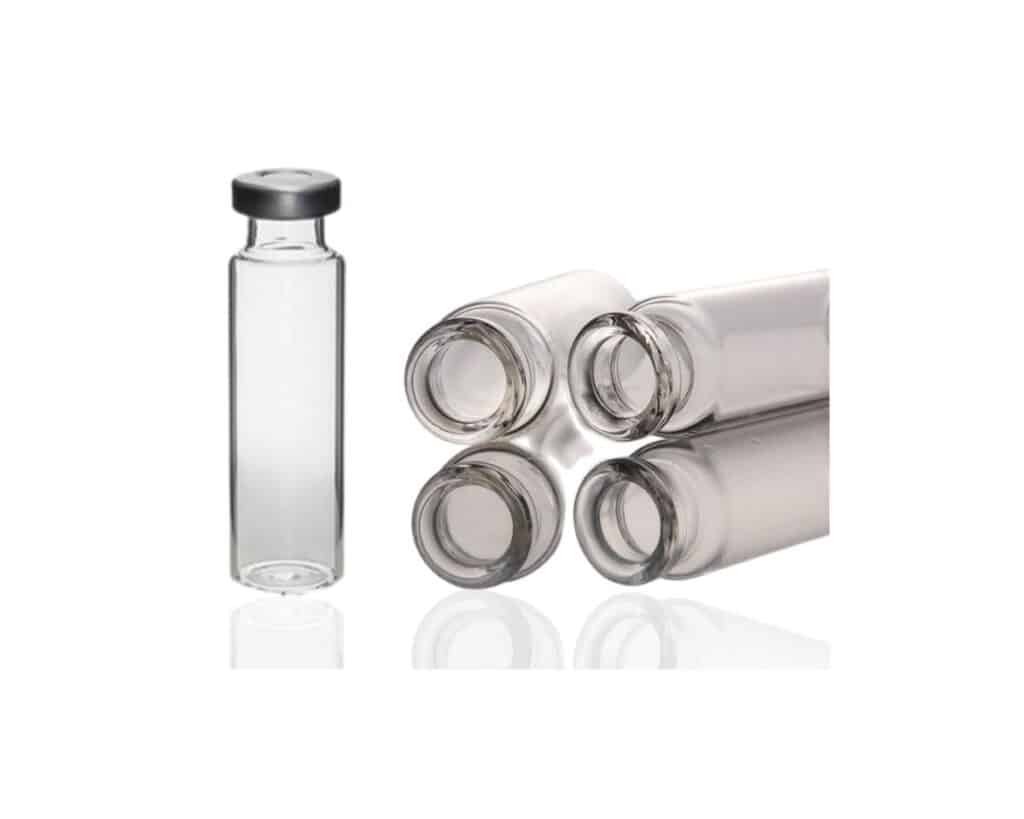
Chromatography is the best method when we need to separate the components in a compound. It is a technique to separate the components based on their physical and chemical properties. So, there are two popular chromatography techniques depending on the phase used in separation. They are liquid chromatography and gas chromatography.
HPLC is a common technique used in pharmaceutical analysis. It helps separate, identify, and quantify the drug substances in different drug formulations. In HPLC, a liquid mobile phase passes through a solid stationary phase due to pressure. It separates the components of the analyte mixtures. HPLC can also be used to analyze novel drugs when they reach various stages of the developmental cycle.
On the other hand, GC or Gas Chromatography uses a gaseous mobile phase to separate the components in the mixture. This approach has two main applications: determining the purity of a sample and separating the parts in a given compound. Gas chromatography can also help identify the components in some circumstances.
Moreover, HPLC does not need any oven or temperature control techniques for its separation. In contrast, GC requires an oven for operations in its chamber where solid, liquid, and gas occur at different time intervals. HPLC and GC are two essential techniques in the entire chromatographic separation family. The difference between HPLC and GC relates to their application and how they work. There are times when HPLC and GC work in combination for a better result.
In GC–LC systems, also known as multidimensional chromatography, a sample is partitioned into the mobile liquid and stationary gaseous phases before analysis. Using GC–LC, several analytes can be transferred from the liquid to the gaseous phase simultaneously. This allows for the efficient analysis of complex samples. Many factors complicate multidimensional chromatography. They can be solvent compatibility, separation time, and sample concentration. Such complications lead to a steep learning curve, preventing users from quickly gaining the full benefit from this technique.
Gas chromatography and headspace GC are the same?
To analyze VSCs or volatile sulfur compounds in various liquid matrices, HS-GC or headspace-gas chromatography can be used effectively. It can also be used in physical chemistry investigations of these substances, and it’s a great way to get data on gas-solid and gas-liquid systems. This tells us that gas chromatography and headspace aren’t the same. They combine analytical processes for a specific compound that requires a better result.
The HS-GC method can determine volatile compounds in samples. It will determine the dynamic and thermodynamic characteristics of compounds in a gaseous state. Compared to traditional gas chromatography, HS-GC can produce more accurate results with even lesser samples.
The headspace-gas chromatography technique is often helpful in analyzing specific volatile samples. Examples are those that are difficult or impossible to study by direct injection. It allows a sample to be transferred from either a solid or liquid matrix into a gaseous phase without chemical derivatization. Headspace sampling is like the more familiar liquid-liquid extraction technique in many ways. The difference is that it works with gaseous solvents instead of liquids. Thus, the analytes can be extracted selectively by controlling various factors such as temperature and pH.
Conclusion
Chromatography has evolved through time. Chromatography has proven how important it is in different aspects of society. From this article, you may have realized the importance of selecting the vial that suits your project and needs. Headspace vials are made of a more specific material than HPLC vials. They hold the truth for better and more credible, and reliable results.
Choosing a specific chromatography vial can be confusing. Whatever vial you need, Mastelf has got it for you. Consult today and get free vial samples.

